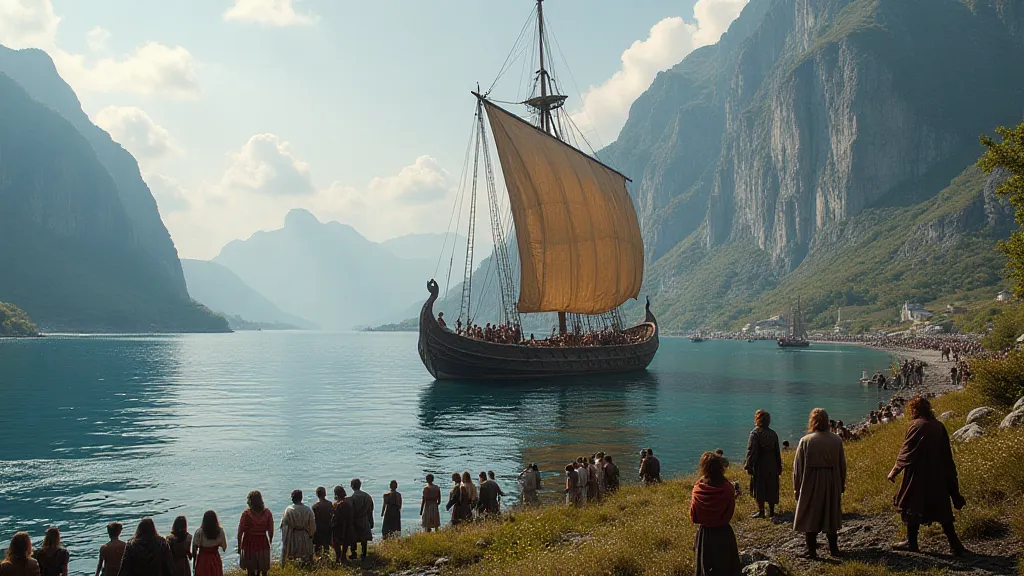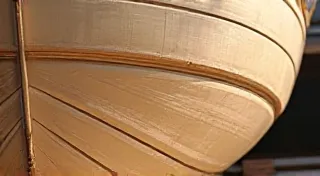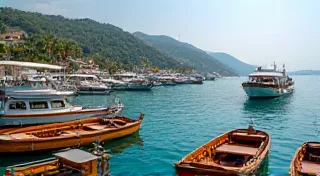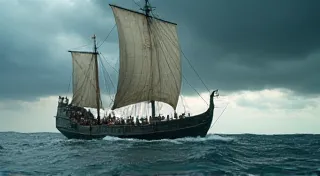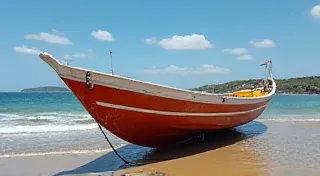Norse Boatbuilding: Clinker Construction and Viking Ships
The Viking Age (roughly 8th to 11th centuries) is synonymous with exploration, trade, and raids. While the prowess of the Vikings is well known, the critical role of their shipbuilding in enabling these feats is often overlooked. Their ships, masterpieces of maritime engineering, were instrumental in allowing them to navigate vast distances, raid coastal settlements, and establish trade routes across Europe and beyond. Central to their shipbuilding was a unique and remarkably efficient construction technique known as clinker construction.
Understanding the Innovation: Clinker Construction
The Vikings weren't the inventors of boatbuilding, but they elevated it to an art form. Many cultures had developed methods for constructing seaworthy vessels, but the Norse approach stood out for its robustness and adaptability. Unlike the carvel construction used in many other shipbuilding traditions (where planks are laid edge-to-edge, creating a smooth hull), clinker construction, also known as lapstrake, involves overlapping planks. Each plank is fastened to the one above and below it with rivets, typically made of iron. This overlapping creates a strong and flexible hull, capable of withstanding the stresses of open ocean travel. It’s a method that prioritizes strength and resilience over the aesthetic simplicity of a perfectly smooth hull.
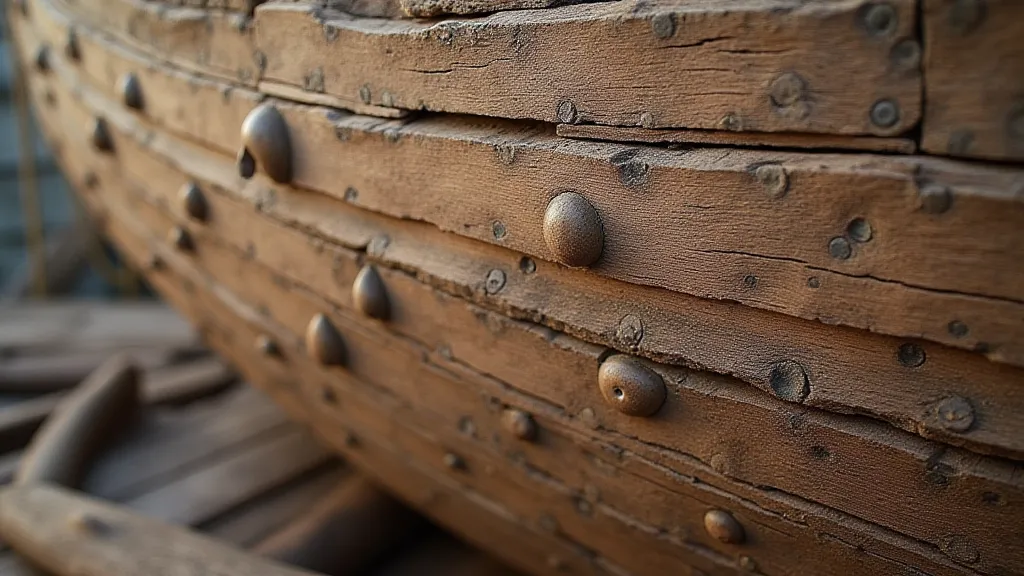
To truly appreciate the significance of clinker construction, it’s helpful to understand why other methods fell short in certain environments. Carvel construction, while capable of producing elegant ships, could be prone to leaks and structural weaknesses under the constant pounding of North Sea waves. The overlapping planks of clinker construction provided a significantly enhanced structural integrity, acting like a series of interlocking shields against the forces of the ocean. Consider, too, the challenges of sourcing ideal timber. Oak and pine, common choices for Norse shipwrights, are often prone to warping and twisting. The overlapping construction allowed for some flexibility in accommodating these natural imperfections in the wood, further contributing to the overall durability of the vessel. For a deeper dive into the mechanics behind this method, readers might find it insightful to explore the concept of a clinker hull and the principles that underpin its construction.
The key advantages of clinker construction were several. Firstly, the overlapping provided significantly greater strength. Secondly, the flexibility of the hull was a crucial asset in rough seas – preventing catastrophic breakage. Thirdly, the design allowed for a relatively lightweight vessel, vital for speed and maneuverability. The wood itself, typically oak or pine, was carefully selected and shaped. Each plank was carefully fitted to ensure a watertight seal, and the skilled shipwrights employed a variety of tools, including axes, adzes, and chisels. The selection of timber was not merely about the species of tree, but also about its grain, knots, and density. Experienced shipwrights could "read" the wood, anticipating how it would behave over time and selecting pieces that would contribute to the ship’s longevity.
A Spectrum of Vessels: Longships, Knarrs, and Beyond
Norse boatbuilding wasn't a monolithic practice. Different types of ships were built for different purposes. The most famous are undoubtedly the longships, the warships of the Viking raiders. These vessels were long, narrow, and shallow-drafted, designed for speed and maneuverability. Their symmetrical design allowed them to be rowed or sailed, providing versatility in different conditions. The longships could beach easily, allowing raiding parties to swiftly disembark. They were, in essence, the Formula 1 race cars of their era, built for bursts of speed and aggressive maneuvering in coastal waters. The design of a longship reflected the Viking’s priorities: quick deployment, swift raids, and a rapid retreat.
Alongside the longships were the knarrs, primarily used for trade and transportation. These were broader and deeper than longships, capable of carrying larger cargoes. While still built using clinker construction, knarrs were generally less streamlined than longships, prioritizing cargo capacity over speed. These ships were the workhorses of the Viking economy, carrying goods like timber, furs, and slaves across vast distances. The sheer volume of goods they moved fueled the expansion of Viking settlements and trade networks.
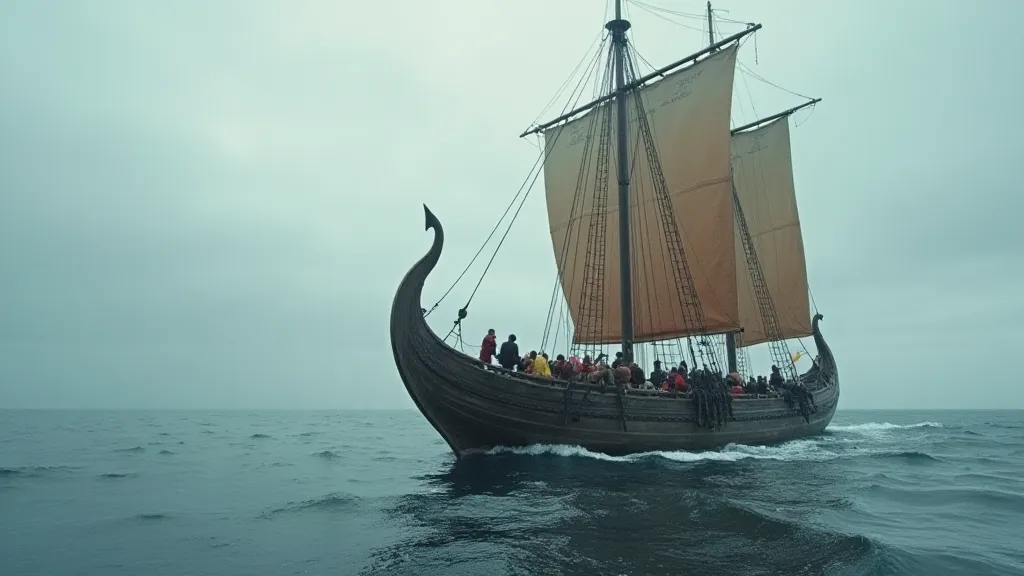
Beyond these two primary vessel types, the Norse also constructed a variety of smaller boats for fishing, exploration, and personal transport. The construction of any vessel, regardless of its size or purpose, was deeply intertwined with the landscape from which the timber was sourced and the skills of the craftsmen involved. The traditions passed down through generations were as much about understanding the nuances of wood as they were about the mechanics of shipbuilding. One can also appreciate the connection to local traditions when considering building techniques like those used in the jolle, a traditional Baltic fishing boat.
The Shipwrights: Masters of a Forgotten Art
The art of Norse boatbuilding was more than just a skill; it was a deeply ingrained cultural tradition. Shipwrights were highly respected members of their communities, often holding positions of considerable influence. Their knowledge was passed down through generations, primarily through oral tradition. This reliance on apprenticeship and direct observation meant that subtle variations in technique existed between different regions and shipyards. There were no detailed written manuals to guide the shipwrights, so the quality of a ship depended entirely on the skill and experience of its builders. The construction of a single ship could take months or even years, involving the coordinated efforts of dozens of craftsmen – from timber felling to plank shaping to rivet forging.
The meticulous preparation of the timber was a critical element in the process. Each plank had to be carefully shaped to fit precisely against the others, ensuring a watertight seal. The rivets, typically made of iron, were forged to withstand the immense stresses of the sea. Even the caulking – the fibrous material used to fill the gaps between the planks – was carefully selected and applied to prevent leaks. The entire process was a testament to the ingenuity and skill of the Norse shipwrights, who were masters of their craft.
The Legacy Endures: Impact and Influence
The techniques employed in Norse boatbuilding represent a remarkable achievement of craftsmanship and engineering. The clinker construction method, perfected by the Norse, spread throughout Northern Europe, influencing shipbuilding traditions for centuries. While the specifics of their methods were passed down through generations of skilled shipwrights, little was written down. This reliance on oral tradition meant that subtle variations in technique existed between different regions and shipyards.
The impact of Norse shipbuilding extended far beyond the Viking Age itself. The robust and efficient vessels they built enabled them to establish trade routes, explore new territories, and shape the course of European history. Even today, the principles of clinker construction continue to inspire modern boatbuilders, particularly those who value strength, durability, and a close connection to traditional methods. Consider also the legacy of boatbuilding in other regions, such as the intricate methods employed in the Mediterranean, where generations of shipwrights have honed their skills in a unique cultural context. The craftsmanship of ship building across different regions underscores the universality and deep roots of this essential human activity.
The ability to construct these robust and versatile ships allowed the Vikings to shape history, influencing trade, politics, and exploration across Europe and beyond. The legacy of Norse boatbuilding remains a testament to the ingenuity and skill of these early seafarers.
